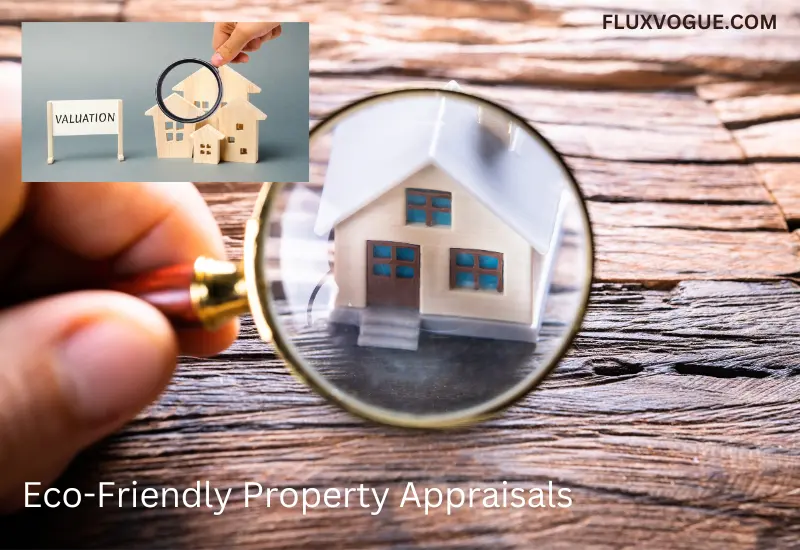When you’re looking to value my property in today’s environmentally conscious market, understanding how sustainability features affect property worth has become essential. The process of valuing sustainable buildings requires a nuanced approach that considers both traditional metrics and emerging environmental factors. Property valuations now extend beyond location and square footage to encompass a complex web of sustainability features that can significantly impact a property’s market value.
Table of Contents
The Evolution of Property Valuation
Traditional property valuation methods have undergone significant transformation to accommodate the growing importance of sustainability. Once valuers focused primarily on location, size, and condition, they now must consider a property’s environmental performance as a fundamental component of its worth. This shift reflects both changing market preferences and increasingly stringent regulatory requirements.
Integration of Sustainability Metrics
Modern property valuation requires understanding how various sustainability features contribute to a property’s overall worth. These metrics fall into several key categories:
Energy Performance Metrics
Energy efficiency represents one of the most quantifiable aspects of sustainable building valuation. Key measurements include:
Annual Energy Consumption: Measured in kWh/m²/year, this metric provides a standardized way to compare properties of different sizes. A highly efficient property might use 50% less energy than a conventional building, potentially translating to thousands of pounds in annual savings.
Peak Load Reduction: Properties with effective energy management systems can reduce peak energy demand by 20-30%, leading to lower utility costs and reduced strain on the grid. This capability increasingly influences property values as energy companies introduce time-of-use pricing.
On-site Energy Generation: Solar panels, ground source heat pumps, and other renewable energy systems contribute directly to value. A typical residential solar installation might generate 3,500 kWh annually, representing £700-£900 in energy savings that capitalize into property value.
Water Efficiency Measurements
Water conservation features have become increasingly valuable, particularly in regions facing water stress:
Water Consumption Rate: Measured in liters per occupant per day, efficient properties often achieve rates 30-40% below regional averages.
Rainwater Harvesting Capacity: Systems can typically reduce mains water consumption by 50% for non-potable uses, a feature that becomes increasingly valuable as water costs rise.
Material and Waste Management
The circular economy aspects of buildings now factor into valuations:
Recycled Content Percentage: Buildings with high levels of recycled materials often command premium values due to their reduced environmental impact and potential for future material recovery.
Waste Management Systems: Properties with integrated recycling and composting systems can reduce waste management costs by 40-60%, affecting operational expenses and overall value.
Financial Performance Indicators
Operating Cost Reductions
Sustainable buildings typically demonstrate superior financial performance through reduced operating costs:
Energy Cost Savings: High-performance buildings often have 30-50% lower energy costs than conventional buildings. When capitalized, these savings can add significant value to property appraisals.
Maintenance Cost Benefits: Sustainable buildings often require 20-30% less maintenance due to higher quality systems and materials, though this varies by property type and usage.
Value Appreciation Patterns
Research indicates that sustainable properties often experience stronger value appreciation:
Premium Rental Rates: Certified sustainable buildings typically command 5-15% higher rental rates than conventional properties in the same market.
Occupancy Advantages: Sustainable properties often maintain higher occupancy rates, with some studies showing 3-5% higher occupancy rates than conventional buildings.
Risk Assessment Factors
Regulatory Compliance
Future-proofing against regulatory changes has become a crucial valuation consideration:
Minimum Energy Efficiency Standards (MEES): Properties meeting or exceeding future MEES requirements maintain value better than those requiring retrofitting.
Carbon Reduction Commitments: Buildings with clear paths to carbon neutrality increasingly command premium valuations as organizations pursue net-zero goals.
Market Risk Considerations
Sustainability features can significantly affect a property’s market risk profile:
Obsolescence Risk: Properties with poor environmental performance face increasing risks of functional obsolescence as market expectations evolve.
Climate Resilience: Features that enhance resilience to climate change impacts increasingly influence property values, particularly in vulnerable locations.
Valuation Methodologies
Income Approach Adjustments
The income approach to valuation requires several sustainability-related adjustments:
Operating Expense Normalisation: Adjusting for energy and water efficiency improvements that reduce operating costs.
Revenue Adjustments: Accounting for premium rental rates sustainable properties often command.
Cost Approach Considerations
When using the cost approach, valuers must consider:
Replacement Cost Premiums: Sustainable features often increase replacement costs but may reduce lifecycle costs.
Depreciation Adjustments: Sustainable properties often experience lower functional obsolescence rates.
Implementation Guidelines
Data Collection Requirements
Accurate sustainable building valuation requires comprehensive data collection:
Energy Performance Data: At least 12 months of consumption data provides a reliable baseline for energy performance assessment.
Water Usage Patterns: Annual water consumption data helps establish efficiency levels.
Verification and Certification
Third-party certifications play an increasingly important role in valuations:
BREEAM Ratings: Properties with excellent or outstanding ratings typically command 10-15% premium values.
EPC Certificates: Properties with high EPC ratings increasingly demonstrate better value retention and growth.
Future Considerations
Emerging Valuation Factors
Several emerging factors may influence future sustainable building valuations:
Health and Wellbeing Features: Properties supporting occupant health through improved air quality and natural light may command additional premiums.
Smart Building Integration: Advanced building management systems increasingly influence property values through improved efficiency and user experience.
Market Evolution
The sustainable property market continues to mature:
Standardization of Metrics: Industry-wide adoption of standardized sustainability metrics will improve valuation accuracy.
Green Finance Integration: The growing availability of green mortgages and sustainable finance options may further influence property values.
Conclusion
Valuing sustainable buildings requires a comprehensive understanding of traditional property metrics and environmental performance indicators. As market preferences continue evolving and regulatory requirements tighten, the importance of sustainability in property valuation will likely increase further.
Success in sustainable property valuation requires staying informed about emerging metrics and methodologies while maintaining a rigorous data collection and analysis approach—properties demonstrating strong environmental performance increasingly command premium values, reflecting market preferences and regulatory requirements.
Understanding these valuation metrics helps property owners and investors make investment decisions and implement improvement strategies. As the market matures, accurately assessing and communicating sustainable building value becomes increasingly crucial for property professionals.















